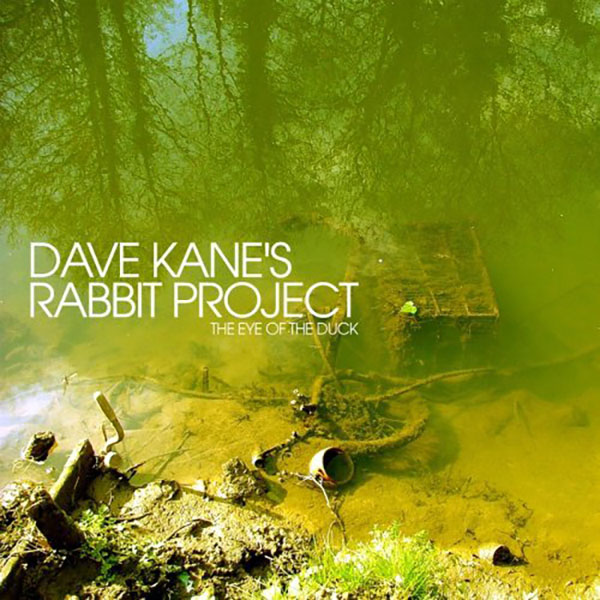
by Ian Mann
April 30, 2009
/ ALBUM
Bright, intelligent music full of surprises. An excellent example of British contemporary jazz
Bassist Dave Kane originally hails from Bangor, Northern Ireland but is now based in Leeds having settled there after completing his studies at the city’s university. Kane is a founder member of the increasingly influential LIMA (Leeds Improvised Music Association) and is musical director of the LIMA Orchestra. He is also involved in a number of small group projects, among them Bourne, Davis, Kane with pianist Matthew Bourne and drummer Steve Davis. Then there is Shank with London based musicians James Allsop (reeds) and Tim Giles(drums) ,a duo with trumpeter Alex Bonney and of course the five piece group Rabbit Project whose music is documented on this excellent new release.
“The Eye Of The Duck” appears on the Cardiff based Edition label run by pianist Dave Stapleton and photographer Tim Dickeson. The label has also released the Bourne/Davis/Kane album “Lost Something” and it’s good to see the jazz scenes of Britain’s provincial cities combining to create a truly national scene that challenges the London monopoly.
Kane’s album is full of music that equals anything London has to offer. The bassist is best known as an improvising musician working at the freer end of the spectrum but “The Eye Of The Duck” also reveals him to be a talented composer. The album strikes an almost perfect balance between freedom and structure, composition and improvisation. It covers a range of styles and makes for an interesting and sometimes challenging listen.
Joining Kane in the Rabbit Project are Leeds based musicians Simon Kaylor (tenor sax), Simon Beddoe (trumpet) and Joost Hendrickx (drums) with the more widely known Matthew Bourne appearing here exclusively on Fender Rhodes.
The quintet kick off with the appositely named “Biff”, a rousing piece of twisted funk that features great interplay between the horns, skittering drums and propulsive bass. Some of it sounds like the kind of thing Polar Bear might attempt but the written parts are punctuated by passages of stormy free playing. Here, as elsewhere throughout the album Bourne’s contributions are very much the “wild card”. “Biff” is certainly a rousing if unorthodox wake up call.
“The Gorman” is more through composed, a lovely North African style piece that is primarily about melody and mood building. Once again the dialogue between the horns is quite exquisite and the piece demonstrates that Kane’s music can be beautiful as well as challenging.
“Hum” begins delicately with Kane’s resonant solo bass before drums, Rhodes and horns embark on a high speed, but still accessible work out. Kaylor’s sax probes and honks, carousing with Beddoe’s trumpet and Bourne departs on a flight of fancy. It’s invigorating stuff for all it’s left field elements.
“Sad Song” features Bourne’s more restrained side in dialogue with Kane. Centred around Kane’s bass this is almost minimalistic but strangely beautiful.
The title track combines form with freedom in a gently shifting magnum opus that sometimes threatens to fall apart but always maintains the listener’s interest.
“Shut Up Sit Down” displays some of the aggression hinted at in it’s title. Squalling horns ride atop Kane’s powerful bass riff before the music enters more unstructured territory. Kaylor produces almost impossibly dirty sounds from his tenor before the piece ultimately resolves itself with the return of the earlier riff. Bourne’s Rhodes serves as both a rhythmic and solo component.
“The Only Way” is another excellent example of Kane’s blending of the free and the structured. The disciplined groove/vamp laid down by the rhythm section and trumpeter Beddoe gives Kaylor free reign for a powerful, honking, slurring tenor solo. Freedom and discipline combined . Excellent.
“Sip” begins with a fusillade of staccato riffing led by Beddoes’ trumpet before the horns fall away giving rise to a three way conversation between Kane, Bourne and Hendrickx. A word for the drummer here, his playing is crisp and intelligent throughout the set, immensely powerful when required, tasteful and restrained when not. The horns return at the end as the tune reaches a relatively subdued, open ended conclusion.
The album closes with the brief “Loulou’s Theme”, a dedication to Kane’s partner played by the leader on solo bass.
“The Eye Of The Duck” is an excellent example of British contemporary jazz. The group interaction between the members of the quintet is consistently excellent and each track is full of surprises whilst always retaining some kind of inner logic. It’s not always an easy listen but the more “out” moments are balanced by some powerful melodies and some exquisite instrumental interplay. There’s certainly nothing predictable about this bright, intelligent music.
Fans of the previously mentioned Polar Bear should find plenty to enjoy here but anybody who appreciates adventurous contemporary jazz should check this out.
blog comments powered by Disqus